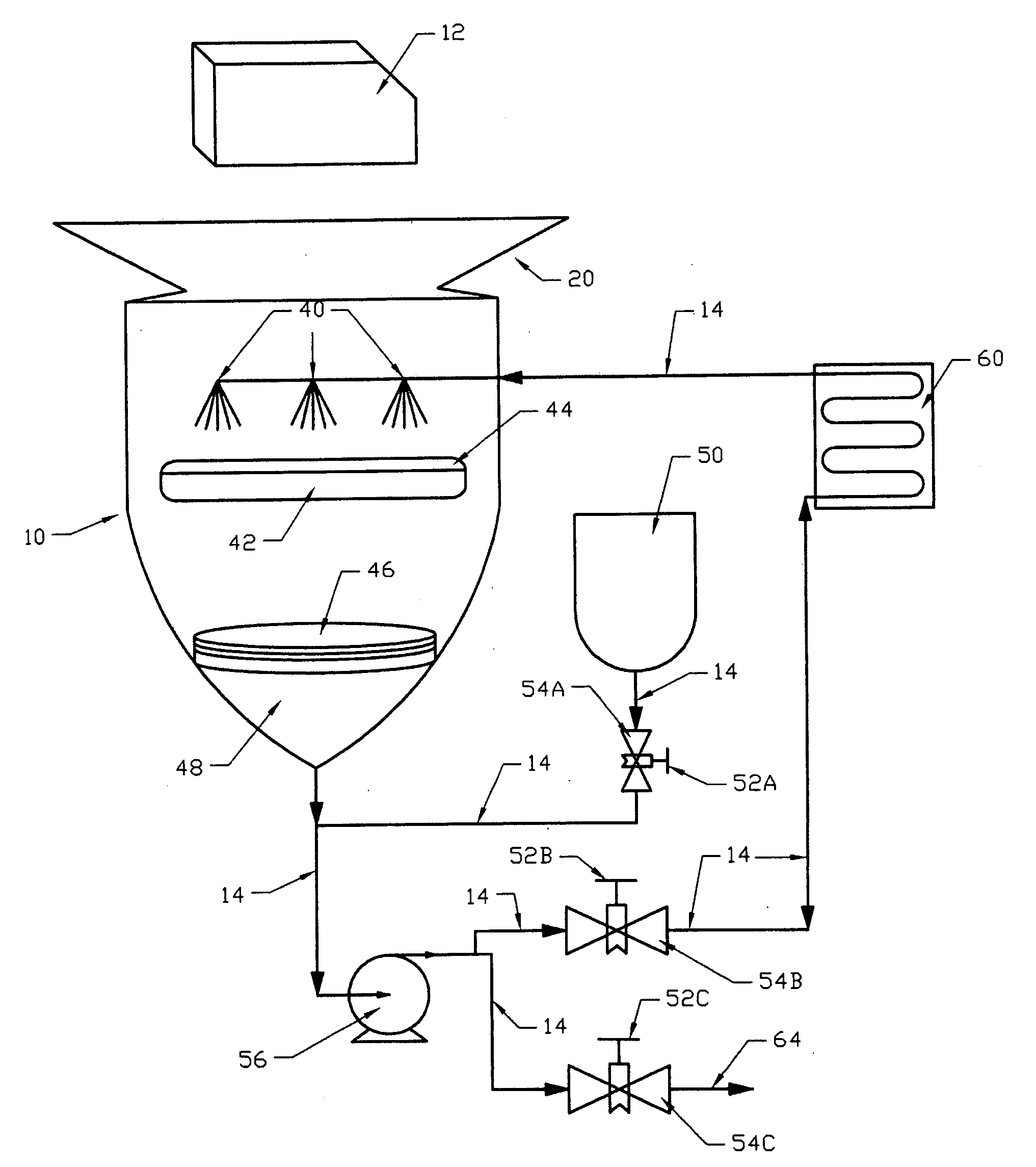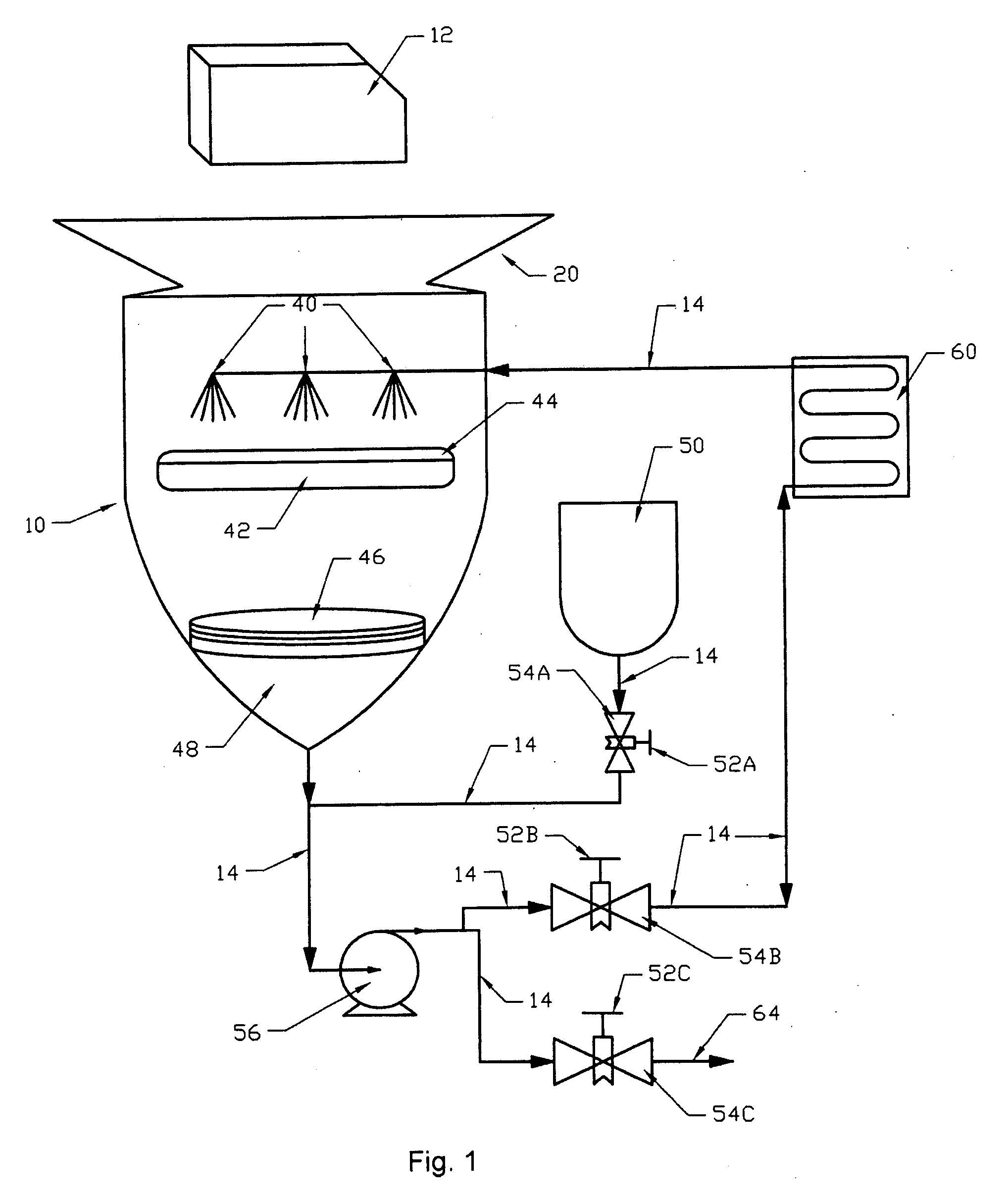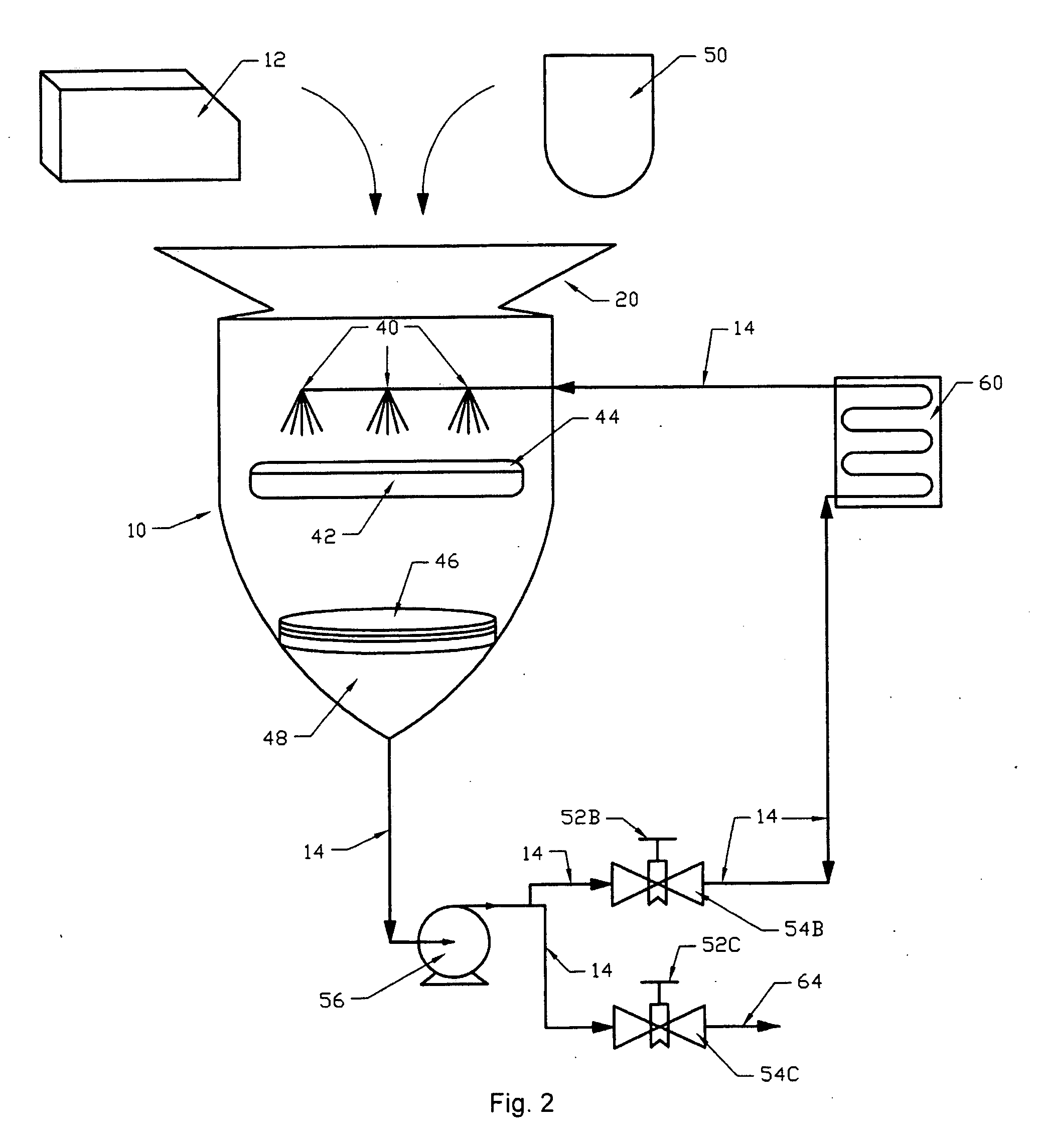Preparing Formulations for Treating Agricultural Products
a technology for agricultural products and formulations, applied in the direction of liquid displacement, separation process, dissolving, etc., can solve the problems of hazardous material storage and spillage, complex and relatively large application apparatuses with ultrasonic atomizing nozzles, and difficult transportation and use of foggers, etc., to reduce thermal fogging temperature, good aerosol characteristics, and low energy consumption
- Summary
- Abstract
- Description
- Claims
- Application Information
AI Technical Summary
Benefits of technology
Problems solved by technology
Method used
Image
Examples
Embodiment Construction
[0055]FIGS. 1, 2, and 3, depict variations having a preferred embodiment of an apparatus used to create a formulation for treating produce, typically in a storage situation. However, one skilled in the art can appreciate the multitude of other situations where the method can be used. A solid chemical agent (12) is added to the formulation chamber (10), typically through a preprocessor (20), which will be discussed in more detail hereafter. The formulation chamber (10) is typically made of a durable plastic capable of moderate temperatures up to 250 such as polypropylene or similar material. While many designs could be chosen, the cone bottom tank with a stand is preferred. The preprocessor (20) is fitted to the top opening of the formulation chamber (10). The preprocessor (20) is generally designed to accept the solid chemical agent (12), but one skilled in the art can appreciate that the preprocessor (20) can be adapted to accept both solid chemical agent (12) and solvent (50) as s...
PUM
| Property | Measurement | Unit |
|---|---|---|
| Fraction | aaaaa | aaaaa |
| Percent by mass | aaaaa | aaaaa |
| Percent by mass | aaaaa | aaaaa |
Abstract
Description
Claims
Application Information
 Login to View More
Login to View More - R&D
- Intellectual Property
- Life Sciences
- Materials
- Tech Scout
- Unparalleled Data Quality
- Higher Quality Content
- 60% Fewer Hallucinations
Browse by: Latest US Patents, China's latest patents, Technical Efficacy Thesaurus, Application Domain, Technology Topic, Popular Technical Reports.
© 2025 PatSnap. All rights reserved.Legal|Privacy policy|Modern Slavery Act Transparency Statement|Sitemap|About US| Contact US: help@patsnap.com



